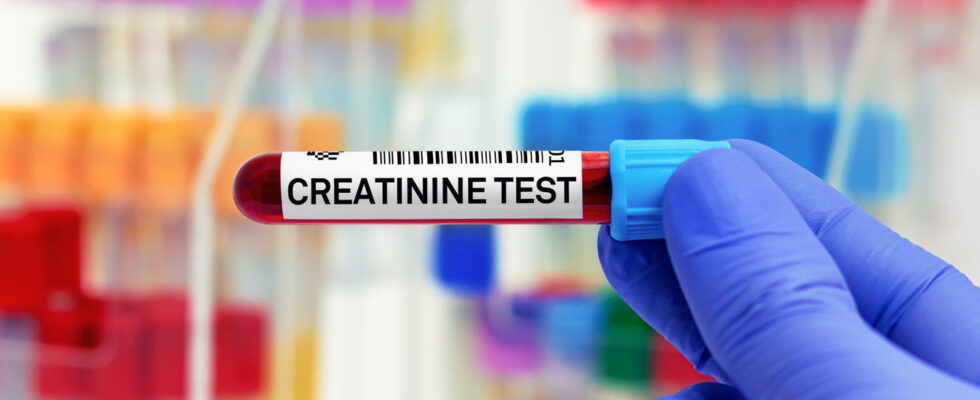Creatinine clearance is used to determine how well the kidneys are functioning.
Creatinine is a chemical molecule created by muscle tissue. It is eliminated from the body by the kidneys, it is a normal chemical waste. The creatinine measurement (creatininemia) is used to assess the state of kidney health, if kidney problems are suspected in the patient. “To know if a patient needs to be put on dialysis, we look at creatine clearance”explains Dr. Sophie Bauer, president of the Union of Liberal Doctors (SML). This is a test that measures the kidneys’ ability to filter creatinine and eliminate it through urine. Creatinine clearance also measures creatinine concentrations in the blood. “We have two ways of calculating clearance, via the Cockroft formula, which differs depending on the person’s gender, or by calculating true clearances, which also requires a urine collection. The results of these calculations are good indicators of renal health. The laboratory calculates creatinine clearance automatically. Depending on the figure obtained, we guide the management.”adds the doctor. Note that there are several factors that can change creatinine clearance, such as age (physiological renal failure), drugs that attack the kidneys, autoimmune diseases or hereditary diseases.
Hemodialysis is the process of cleaning the blood. “The blood, loaded with waste, is collected by a machine which cleans it and transfuses it pure into the patient’s body.” In other words, the machine takes over from the failing kidneys by eliminating waste. There is another type of dialysis, peritoneal dialysis, which can be done at home; it is the membranes present in the abdomen that filter and purify. Dialysis is proposed when the creatinine clearance is less than 10 ml/min/1.73 m2. “We often intervene beforehand. As soon as the biological alert is raised, we eliminate any drugs that are toxic to the kidneys. We can also force the kidneys to work by prescribing diuretics. In cases of advanced renal failure, we reduce protein intake. If the kidneys eliminate poorly, water restrictions are sometimes put in place.”
“For people on dialysis, we always have the option of a kidney transplant, as long as they are able to tolerate immunosuppressants and if a graft is available. It is also important to screen for kidney problems in order to eliminate all toxins and to put in place early treatment in order to avoid dialysis,” concludes Dr Sophie Bauer.
